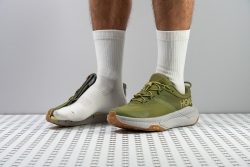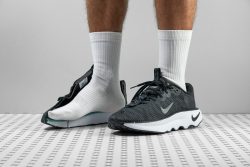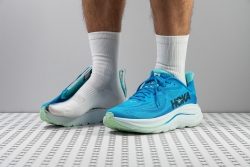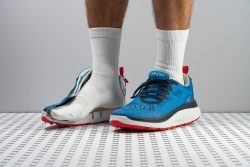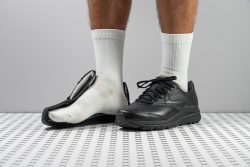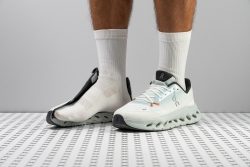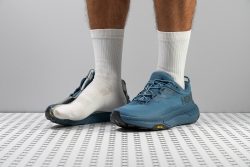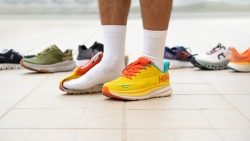7 Best Shoes For Walking On Concrete in 2025
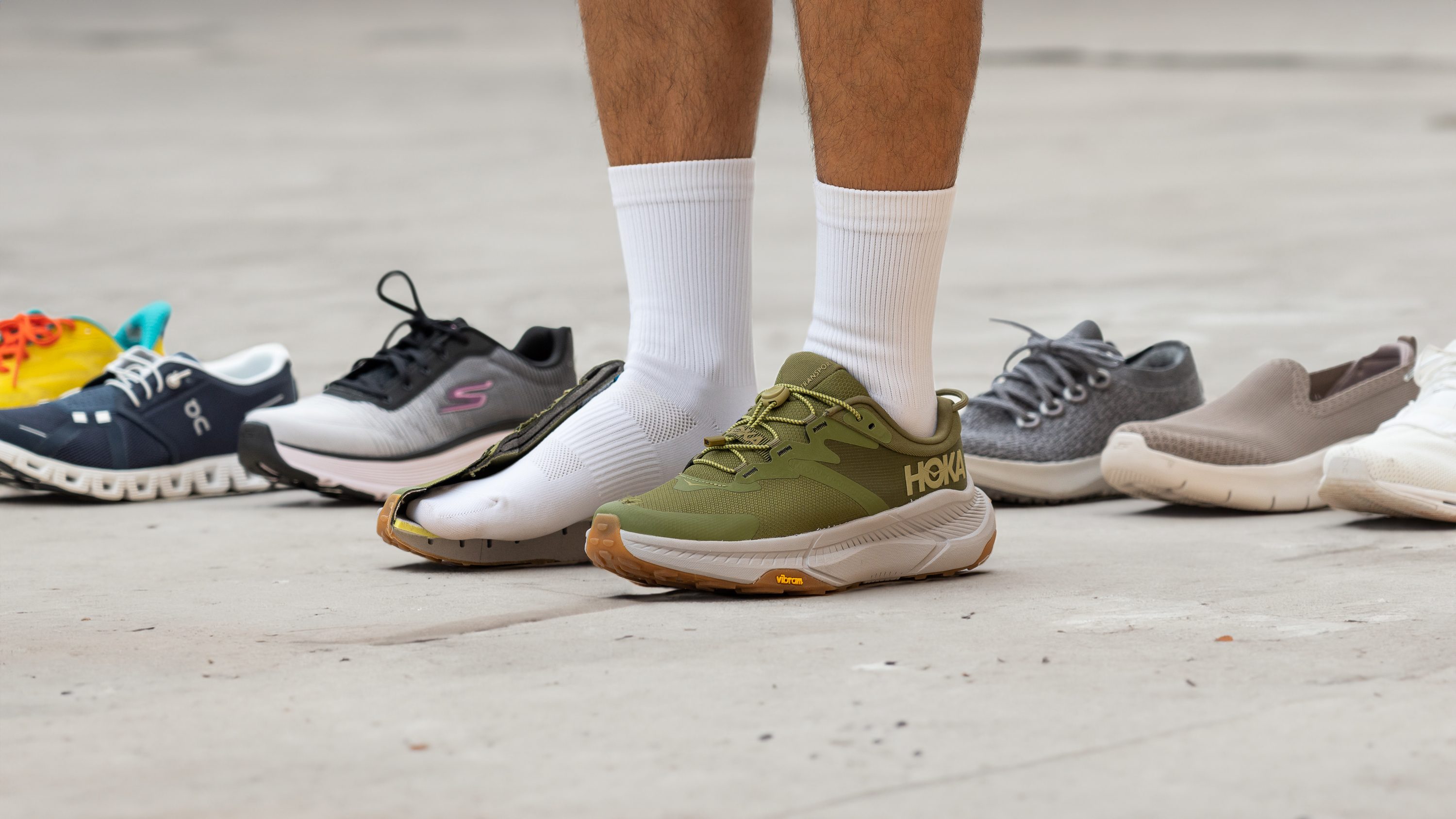
We buy shoes ourselves. We earn commissions when you buy through us, at no extra cost. Why trust us
Standing long hours on hard surfaces will essentially take its toll on your feet and whole body. To help alleviate this pain, you should wear a good pair of walking shoes suitable for concrete.
To help you out, we have gathered several recommendations that you can use for your difficult days at work or your next walking session. We subjected these walking shoes to intensive testing before we vouched for them. Read over our life-changing suggestions to make your walks and standing on concrete more fun and enjoyable.
How we test shoes for walking on concrete
We have meticulously assessed and tested more than 80 walking shoes to help you find the best one. For honest and fair reviews, here is our approach:
- We buy walking shoes using our money.
- We put these shoes through a series of wear tests to determine their comfort, durability, flexibility, and many other parameters. We walk, stand, and even lightly jog in them on various surfaces, focusing on cemented or concrete ones both indoors and outdoors.
- We also do tests in our lab. We cut the walking shoes in half to examine every little detail properly. One essential characteristic we look for in the best walking shoes on concrete is cushioning. We measure the heel and forefoot stack height, shock absorption, platform width, stability, and flexibility.
Best shoes for walking on concrete overall
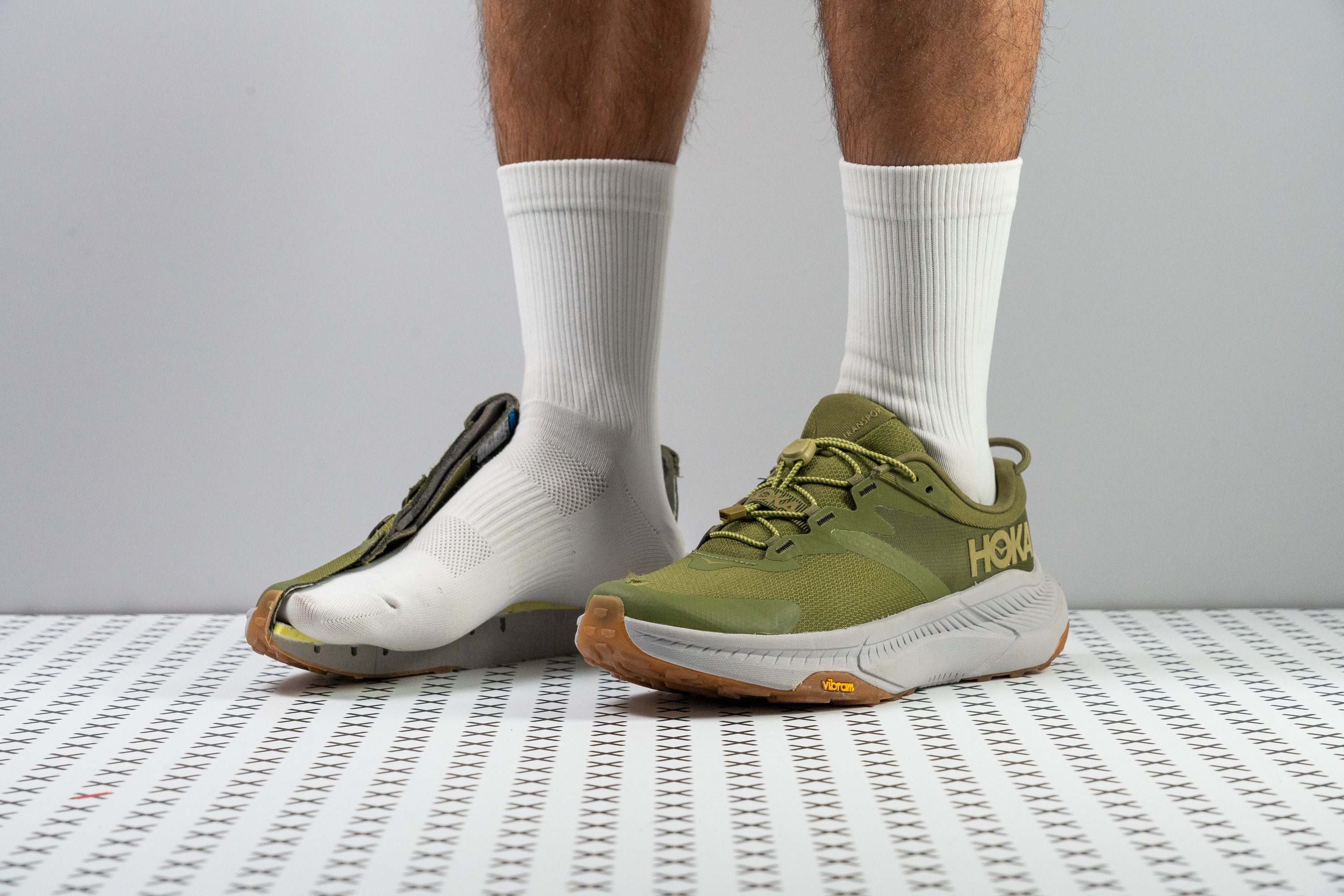





































What makes it the best?
While searching for the best concrete shoes, we looked for a shoe that’s tough enough to handle rough days on the job. We found what we were looking for in the Hoka Transport with its soothing cushioning, resilient outsole, and secure fit. These factors grabbed our attention when we tested them in the lab and on the streets, putting the Hoka Transport firmly above the rest.
The Hoka Transport’s cushioning felt heaven-sent as we pounded the streets in them. We looked into this further in our lab, where we pressed our durometer to its midsole to see how it compared to other shoes. We got a reading of 21.9 HA (after performing the test 4 times for improved accuracy), making it 23% softer than the average walking shoe - truly a gift for those who want to give their feet some pampering.
Since concrete can be a bit more abrasive than other surfaces, we found it great that the Hoka Transport’s sole is well-protected. Our durometer test on its outsole yielded a reading of 81.9 HC, making the shoe 13% firmer than the average. Even if something does make a dent, the Hoka Transport’s outsole is sufficiently thick to remove all worries about it wearing through. In the lab, we used our caliper to measure its thickness, giving us a figure of 3.7 mm which is impressive since the average walking shoe’s outsole thickness is at 1.7 mm.
Another thing we found amazing about the Hoka Transport is the way that it keeps feet locked in. After systematically pushing and prodding its heel counter, we gave its stiffness a reading of 3 out of 5 (where 1 is the most flexible), making it stiff enough to reliably resist ankle wobbling. We also found that it was able to embrace our feet well with its semi-gusseted tongue, giving us better lockdown.
One thing we must warn about is the Hoka Transport’s lack of breathability. It performed worse than the average walking shoe in letting air in and out, so we cannot recommend it for those who spend their days in sweaty conditions.
Pros
- Well-cushioned for all-day wear
- Spacious toe box
- Superior traction
- Reliable outsole durability
- Easy to slip in and out
- True-to-size fit
- Easy to clean
- Sustainable
Cons
- Not great for warm weather
- Squeaky during break-in
Concrete walking shoes with the best shock absorption
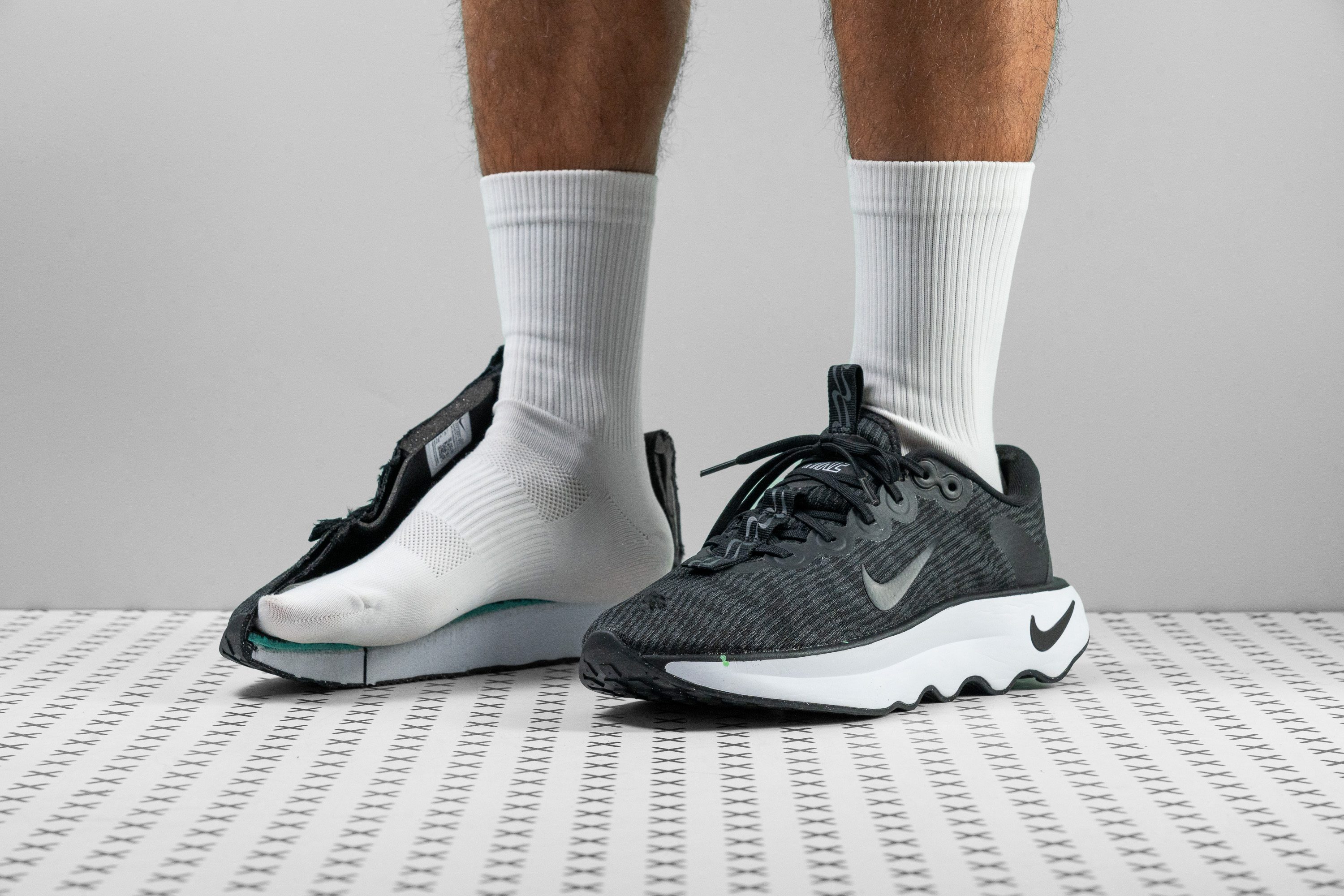















































What makes it the best?
We walked and pounded the streets for long hours and found the Nike Motiva’s plush nature erases the harshness of concrete ground, making it our best shock-absorbing walking shoe for this type of surface. Our lab reveals why: it has generous and leg-saving cushioning, a unique geometry that promotes seamless transitions, and a long-lasting outsole.
Motiva brought the clouds to the street through its above-average stack height. Our caliper measures a 34.9 mm heel that absorbs much of repetitive landing impact, confirmed by our shock absorption test with an impressive 133 SA rating. Being 19.8% above average, it explains Motiva’s all-day comfort.
Motiva elevates our walks with its effortless, smooth strides, courtesy of its prominent rocker. It has raised curvy edges that lead us forward. To preserve this rocking motion, a level of resistance is needed. Upon checking with our bend test, Motiva is 10.1% more resistant than average.
Beneath the shoe is an outsole that can handle rough surfaces. The shoe barely had wear after extensive testing. Our lab test confirms its compound is a tough 92.0 HC that’s 3.0 mm thick, both indicating a long lifespan.
Unfortunately, taking this shoe out on a humid day isn’t the best idea because of its subpar breathability. Best to use this pair during cooler seasons.
Pros
- Rocker makes for effortless walks
- Audaciously plush cushioning
- Extra lively and bouncy ride
- Out-of-the-box comfort
- Very wide and stable base
- Durable outsole
- Amazing wear resistance in the upper
Cons
- Lacks breathability for hot weather
- Sole develops wrinkles easily
- Rocker takes time to get used to
- Lacks grip on wet surafces
Best shoes for walking on concrete all day
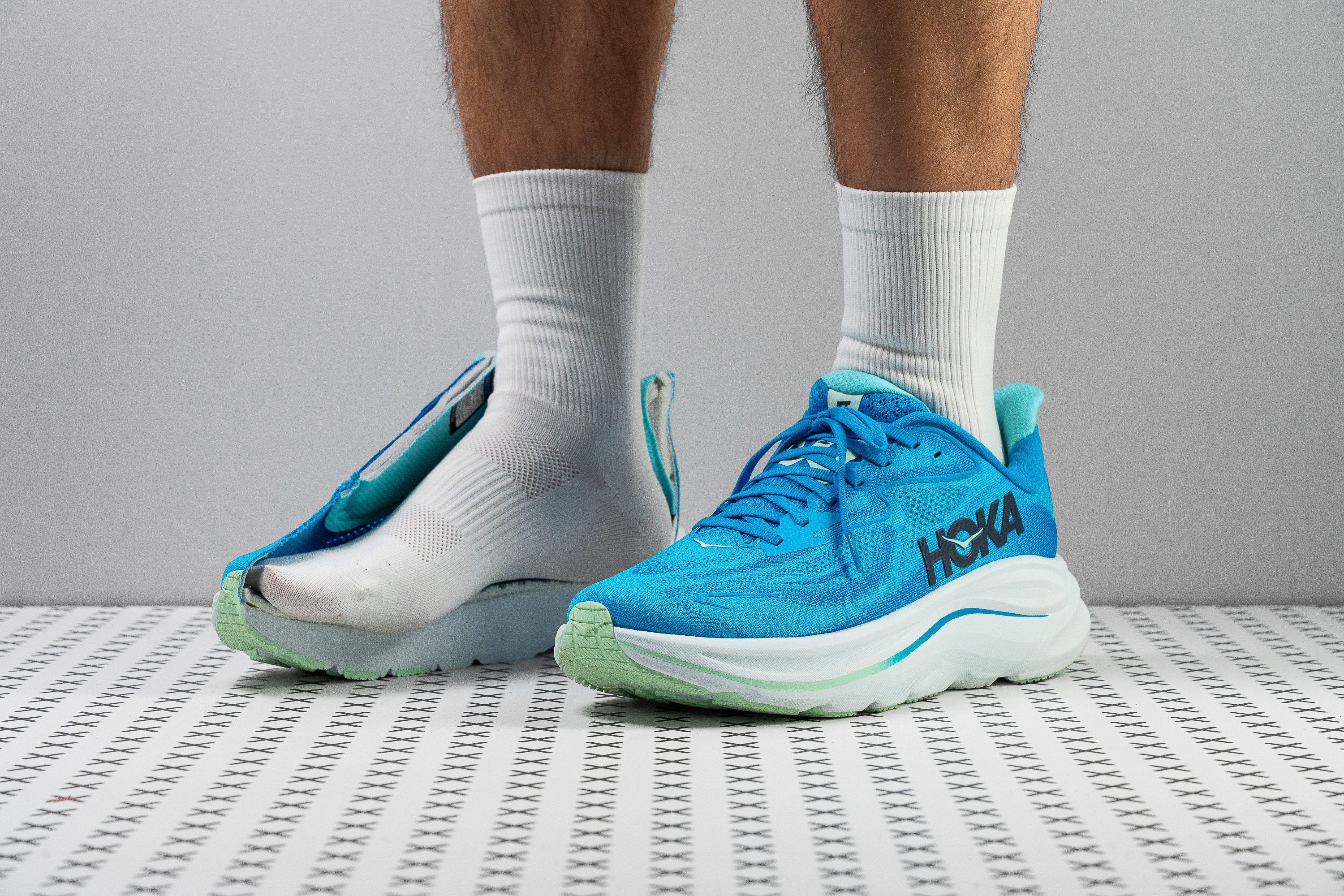


















































What makes it the best?
Hoka Clifton 10 gave us exactly what we’re looking for when standing on hard surfaces for extended periods—an utterly cushioned, supportive, and spacious platform. We wore and lab-tested the best concrete walking shoes and confirmed Clifton 10 is the best for all-day wear.
Our feet can’t get enough of the generous foam that protects our legs from solid surface impact. We measured the stack with our caliper at a massive 44.4/32.0 mm. It offers unmatched cushioning and protection, especially since we also recorded elite levels of shock absorption at 147 SA in the heel and 122 SA in the forefoot.
Surprisingly, this monstrous beast feels steady on foot. It’s soft for all-day wear, yet sturdy enough not to collapse easily when we move laterally. The midsole features high sidewalls and offers a very generous 116.9/94.5 mm landing platform, adding to our surefootedness.
The shoe’s widest part near the ball of our foot is very accommodating as well. Even when our feet became swollen from long hours of standing, we rested comfortably inside the shoe. Using our gel mold, we verified its spaciousness at 97.2 mm.
With all the cushioning, Clifton 10 tipped the scales to 9.7 oz (275g). Those looking for an even lighter shoe can explore other options.
Pros
- Superb joint protection
- Wider toebox improves toe splay
- Comfortable upper
- Stable ride despite its high stack height
- Works well for heel strikers
- Ideal for long runs
- Versatile for daily walking or jogging
- Achilles-friendly heel collar design
- Traction improvements
Cons
- Needs a better foam ASAP
- Notable weight gain from v9
- Feels more Bondi than Clifton
- Non-gusseted tongue
Best rocker-bottom shoes for walking on concrete
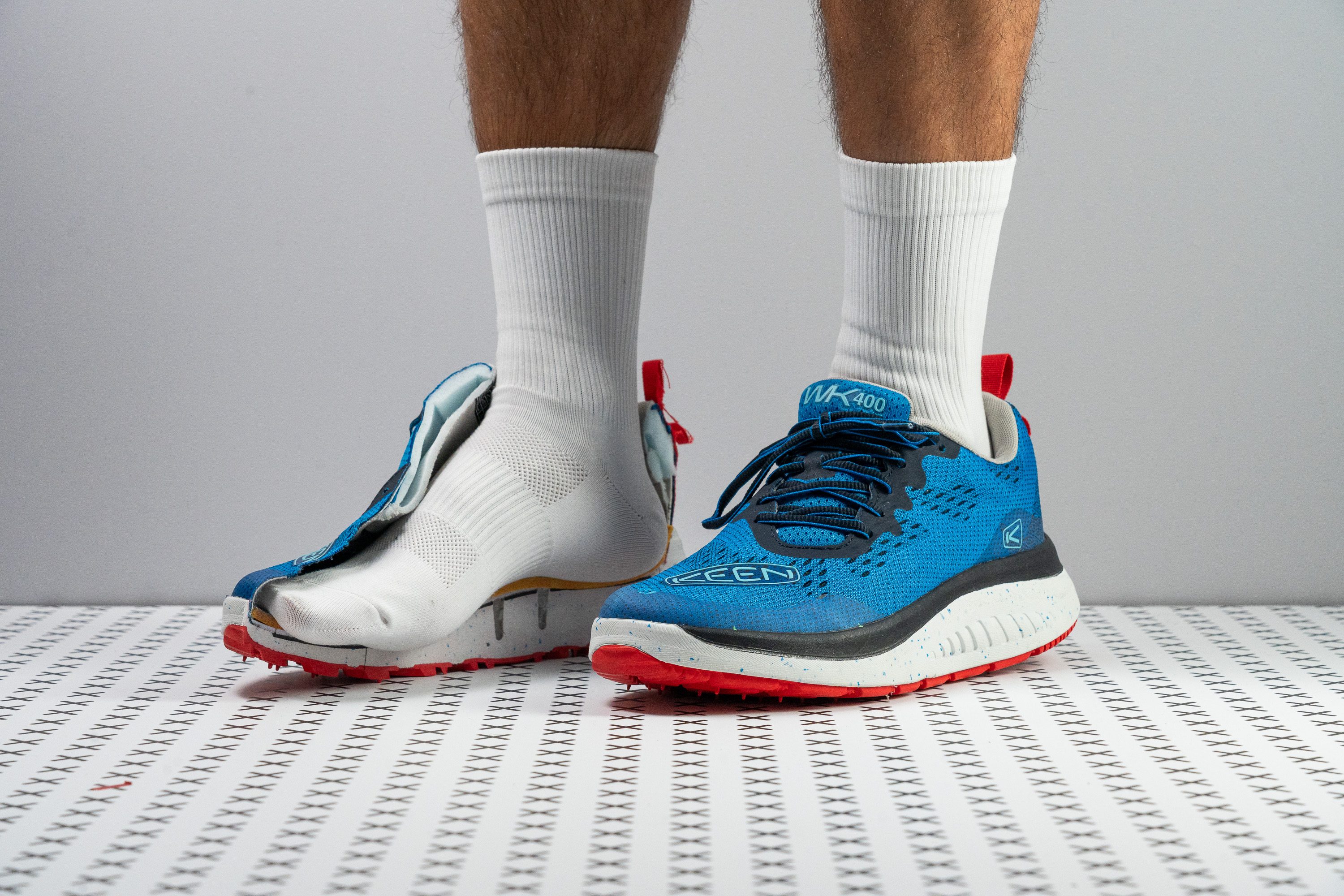


















































What makes it the best?
Among walking shoes we tested on concrete, the KEEN WK400 proves it’s the best-rockered shoe. It paves the way for seamless and effortless strides, packed with luxurious comfort and toughness in its outsole.
The ride feels enjoyable thanks to its plush and responsive cushion. Our durometer reveals it’s 12.0% softer than average. Further delivering impact protection is its very generous 45.7 mm heel—one of the tallest we’ve ever seen. On the other end is a modest forefoot that leads to a staggering 21.4 mm drop. A steeper incline translates to smooth forward motions and less pressure on our Achilles and feet.
To boost stability, WK400 has a rigid plate beneath the midsole that also helps retain the KEEN CURVE's shape. This stiffness is essential in maintaining our forward momentum, and our bend test reveals it’s 60.8% more resistant than average.
Our lab tests show the rubber in the outsole is 12.7% harder and 2.4 mm thicker than average. Our observations further support its durability since it looked new despite rigorous testing. We also found it to be grippy and protective enough for moderate trails.
Our cut-in-half shoe reveals a dual-layer fabric in the upper, which explains why it lacks airflow on hot and humid days. Best to use this pair in moderate to cooler temperatures.
Pros
- Rocker sole propels you forward
- Copious amount of cushioning
- Amazingly comfortable step-in feel
- Highly durable and abrasion-resistant
- More stable than it seems!
- Can go from road to trail
- Accommodating toebox
Cons
- Needs some getting used to
- Heavier than average
- Slippery when wet
Shoes for walking on concrete with the best arch support
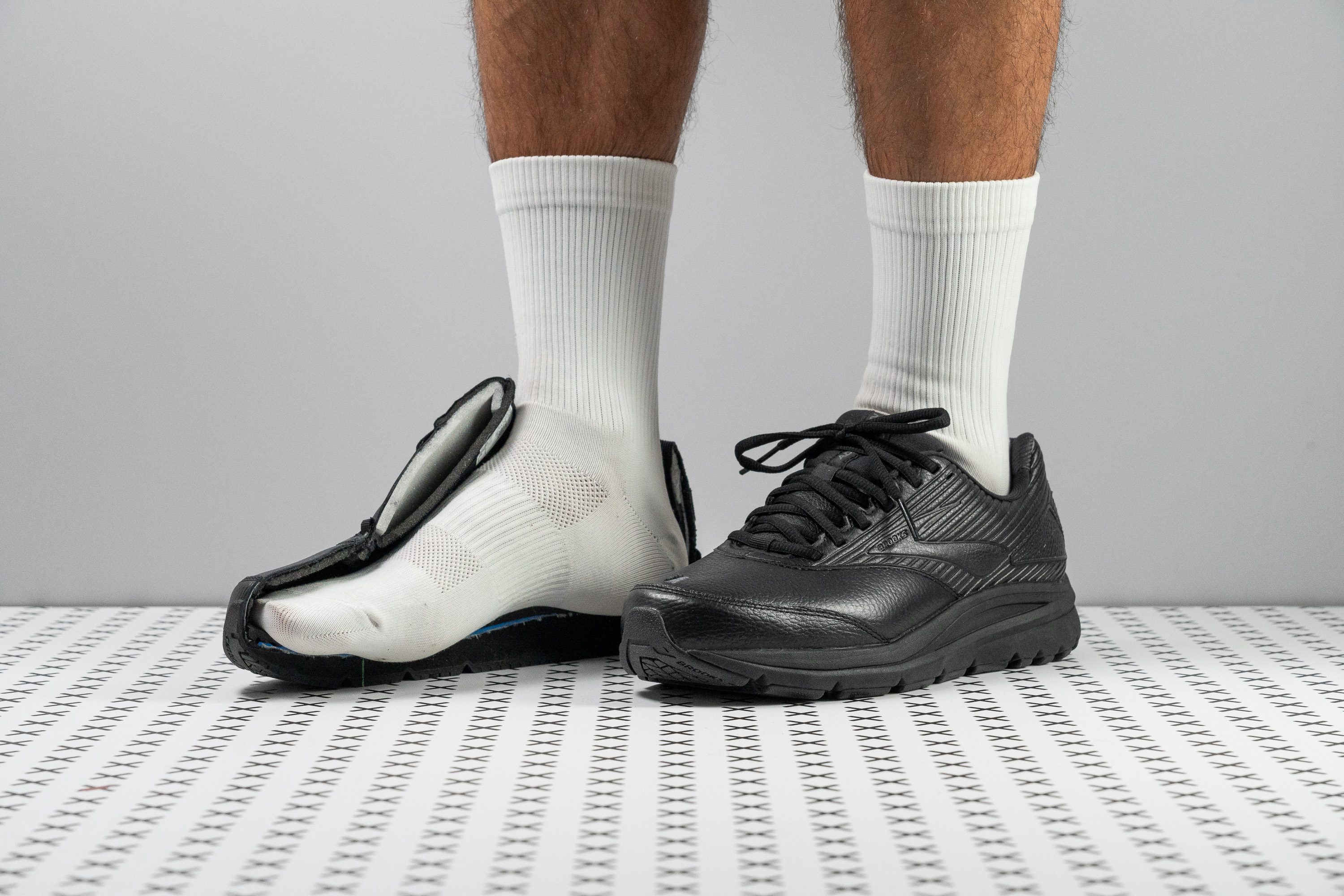


















































What makes it the best?
The Brooks Addiction Walker 2 delivered exceptional stability in our trials and comfort for prolonged wear, making it our concrete walking shoe with the best arch support. It displayed remarkable durability in our lab and sturdiness in its platform that promotes foot health, earning the approval of podiatrists.
The AW2 inspires surefooted strides even as our feet get tired. An Extended Progressive Diagonal Bar enhances support and minimizes excessive movements, earning a 5/5 in stiffness, which helps maintain control. The midsole, measuring a balanced 25.9 HA, provides comfort without bottoming out.
The AW2 features a resilient framework, from its all-leather upper to its tougher-than-average 84.5 HC outsole. It bravely resisted our abrasion test, earning a 5/5 in toebox durability and sustaining 40.0% less damage than average in the outsole. As if that wasn’t enough, the rubber is 5.5 mm thick! It feels impossible to wear this shoe down.
Unfortunately, its durable build comes at the expense of weight. At 13.7 oz (388g), it felt like a drag vs. the 9.8 oz (277g) average walking shoe.
Pros
- Unmatched stability and arch support
- Broadly recommended by podiatrists
- Incredible abrasion resistance and durability
- Thick and lasting cushioning
- Wide and steady platform
- Great for cold and drizzly days
- Comfortable in-shoe feel
- True to size and fit
- Can match formal work attire
Cons
- Heavier than average
- Quite stiff, needs breaking on
- Not as slip-resistant as claimed
- Not breathable
Concrete walking shoes with the best energy return























































What makes it the best?
Pillowy landings and springy takeoffs are what we experienced in the On Cloudtilt. Our feet can confirm that it offers the best energy return among concrete walking shoes, further validated by our lab tests. Moreover, it even shows that the outsole is durable enough for abrasive surfaces.
The midsole offers a lot of excitement underfoot, so we tested it immediately for energy return. Its solid 58.1% score confirmed our sensations because it’s 13.9% bouncier than the average.
Our shock absorption test confirms the heavenly bliss our feet experienced with a remarkable 132 SA score, which means it reduces stress on the legs by 18.9% vs. the average. Moreover, Cloudtilt stands at a generous 35.5/26.8 mm for unmatched impact protection. The CloudTec compression takes comfort to the next level by making the shoe feel softer than it is.
Despite its height, Cloudtilt feels light. Our scales show it’s only 9.4 oz (266g), feeling effortless on foot compared to the average walking shoe (10.1 oz/286g).
The tough 81.6 HC rubber covers the shoe’s high-wear areas in the outsole. It resisted our abrasion test fiercely and sustained 57.1% less damage than average, cementing its durability.
However, we can only recommend this pair in cool weather because of the woven upper's lack of ventilation. Those who need more breathability should check other options.
Pros
- Plenty of cushioning for long hours on feet
- Soft yet bouncy ride
- Feels nice and light on foot
- Abrasion-resistant upper and outsole
- Wide and steady platform
- Excellent outsole grip
- Easy on-and-off with bungee laces
- Upper made of recycled material
Cons
- Not very breathable
- Flimsy inner lining and insole
Best waterproof shoes for walking on concrete
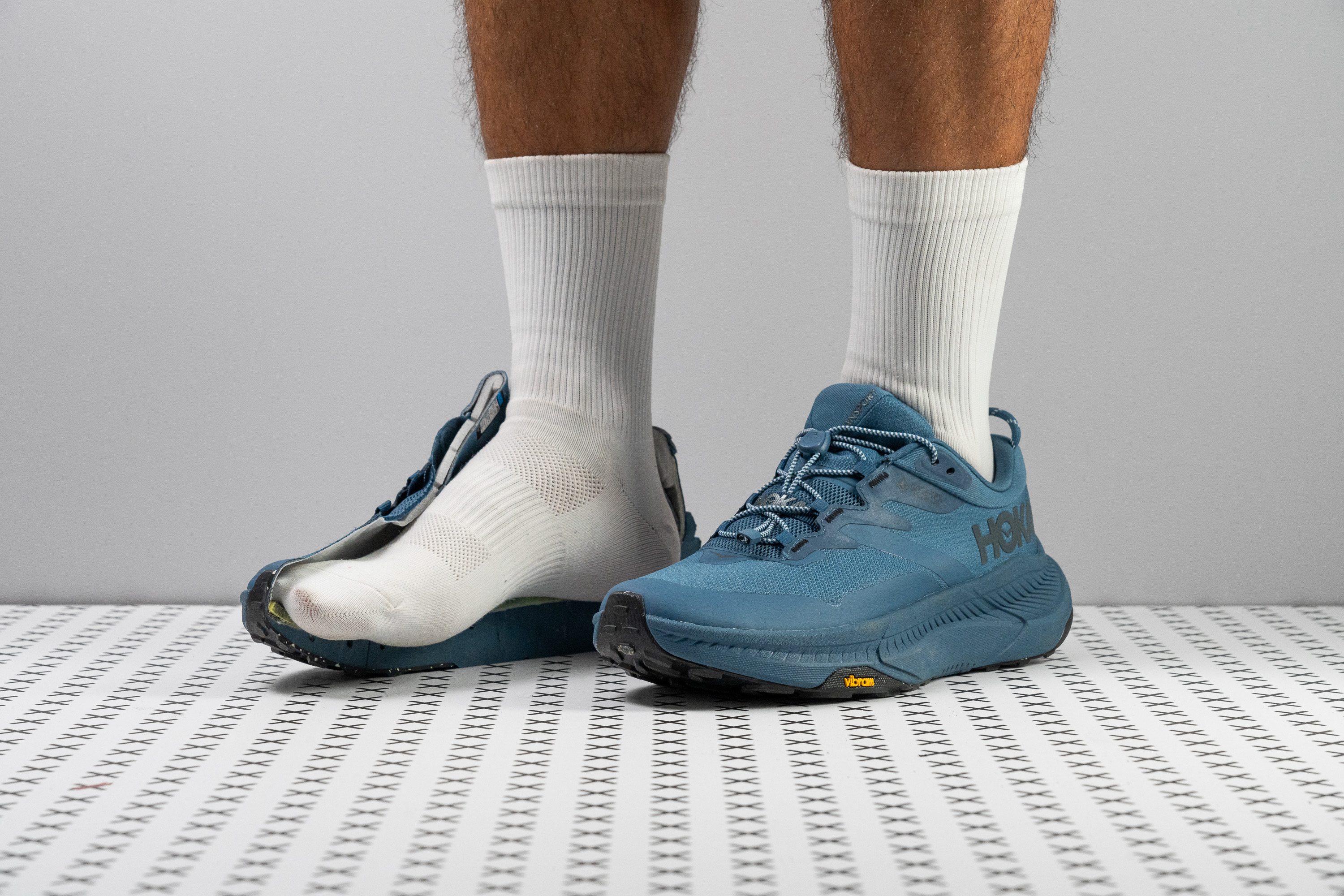





















































What makes it the best?
We felt ultimately protected in our strolls while wearing the Hoka Transport GTX. It has a robust framework—from its tough Cordura upper to its rugged Vibram outsole—that can withstand any road and weather conditions while securing our strides. Based on our lab results, it’s the best waterproof concrete walking shoe.
Besides the effective Gore-Tex membrane, Transport GTX adds a tough fabric called Cordura. Combining the two creates an impenetrable barrier, as confirmed by our breathability test with the lowest 1/5 score. This makes it highly effective in keeping us warm and dry. Additionally, its 4/5 durability score makes it our shield.
The shoe’s tough construction enhances stability by containing unwanted twists and ankle rolls. Our manual assessment proves it strongly resists movement torsionally, earning the highest 5/5 score. Even in our bend test, it emerged 22.8% stiffer than average.
Beneath the midsole, the Vibram outsole does the dirty work. Our lab confirms its solid defense with an above-average 81.0 HC durometer reading and a thickness of 3.4 mm. Furthermore, it showed 33.3% less damage than average in our Dremel test, cementing its durability.
However, its solid build is a heavy 11.6 oz (330g), 19.1% above average. If weightlessness is a priority, best to look elsewhere.
Pros
- Top-class waterproofing
- Cushioned and supportive for all-day wear
- Smooth strides thanks to rockered shape
- Very stable platform
- Highly durable construction
- Excellent grip on dry and wet city streets
- Quick and easy lacing system (regular laces included in the box as well)
- Reflective elements all throughout the upper
- Sustainable materials in almost every shoe part
Cons
- A bit heavier than average
- Major stack and drop discrepancy with official specs
Choosing the best shoes for walking on concrete
Let’s face facts: human feet did not evolve to walk on hard surfaces like concrete. Proper footwear is an essential adaptation tool to keep your feet comfortable, protected, and injury-free.
Walking shoes designed for concrete surfaces offer abundant cushioning and support that not all shoe types possess. They also have the right kind of rubber outsole that can handle long-term abrasion from this unforgiving surface.
Cushioning and shock absorption in walking shoes for concrete
Walking on concrete – or other hard, manufactured surfaces – subjects your feet to repetitive, unforgiving impact forces, leading to discomfort and fatigue.
The best concrete walking shoes feature relatively thick midsoles and insoles to provide lasting shock absorption for your feet and joints. Look for at least 100 SA of shock absorption in the shoe's heel for long hours of walking and standing on hard surfaces.
We measure the shock absorption of every shoe in our lab in accordance with the ASTM F1976 protocol to find out exactly how much impact protection you can expect underfoot.
There is no rule about how soft the midsole cushioning should be in a walking shoe for concrete. It all depends on your personal preference.
To let you know what to expect in a given shoe, we use a Shore A durometer to measure the softness of each midsole as precisely as possible in HA units. The smaller the HA reading, the softer the midsole:
- soft: < 20 HA
- balanced: 20 - 30 HA
- firm: > 30 HA
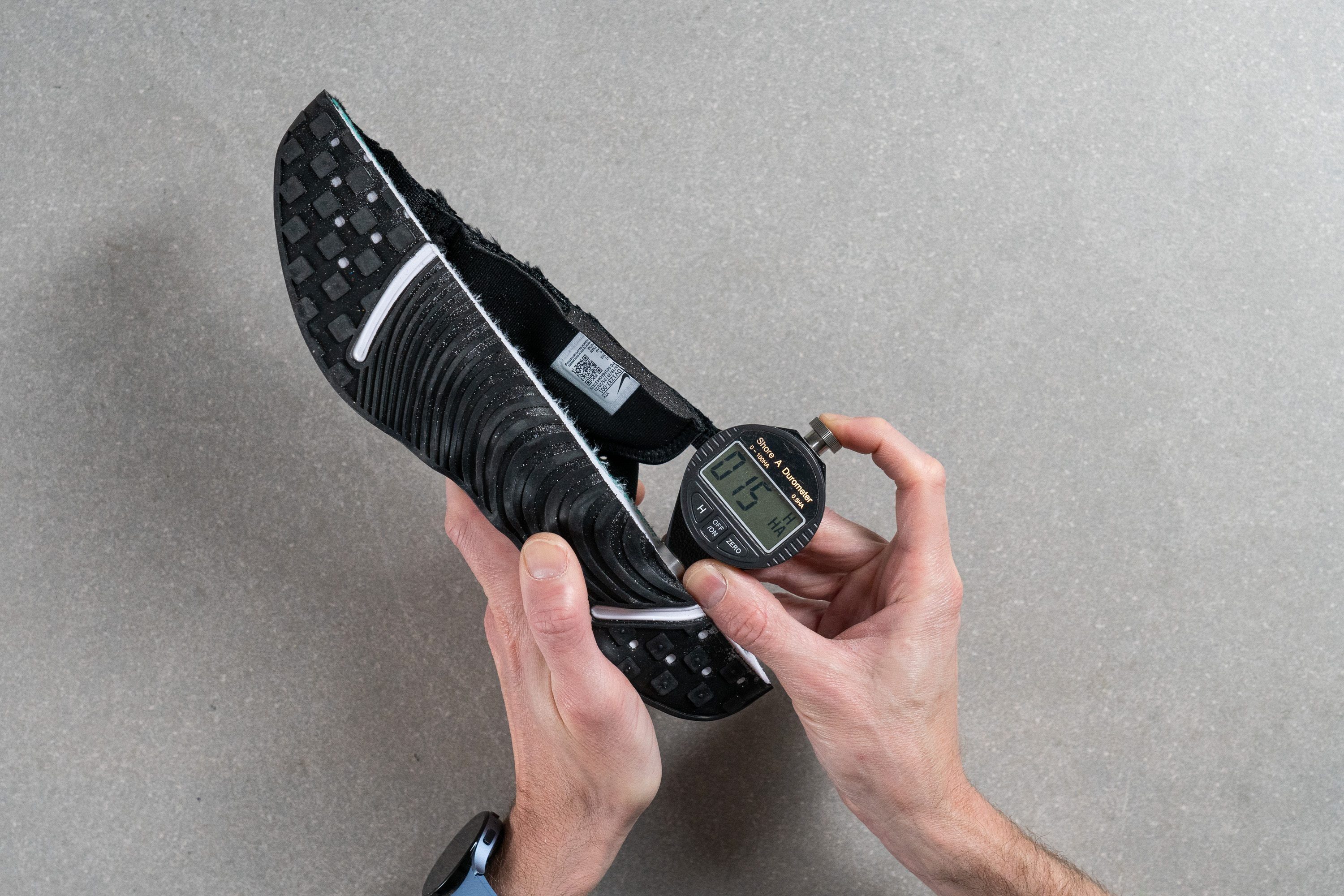
Choose a softer shoe if:
- you just want that nice and plush underfoot experience
- you want to keep your feet free from fatigue after hours of standing and walking
Choose a firmer shoe if:
- you need a more stable and supportive platform
- you have foot conditions like flat feet, overpronation, or plantar fasciitis
Concrete requires a durable shoe outsole
The outsoles of concrete walking shoes are engineered for durability. Rugged outsole compounds and a thicker construction will help your shoes withstand the abrasiveness of concrete surfaces without wearing them out quickly.
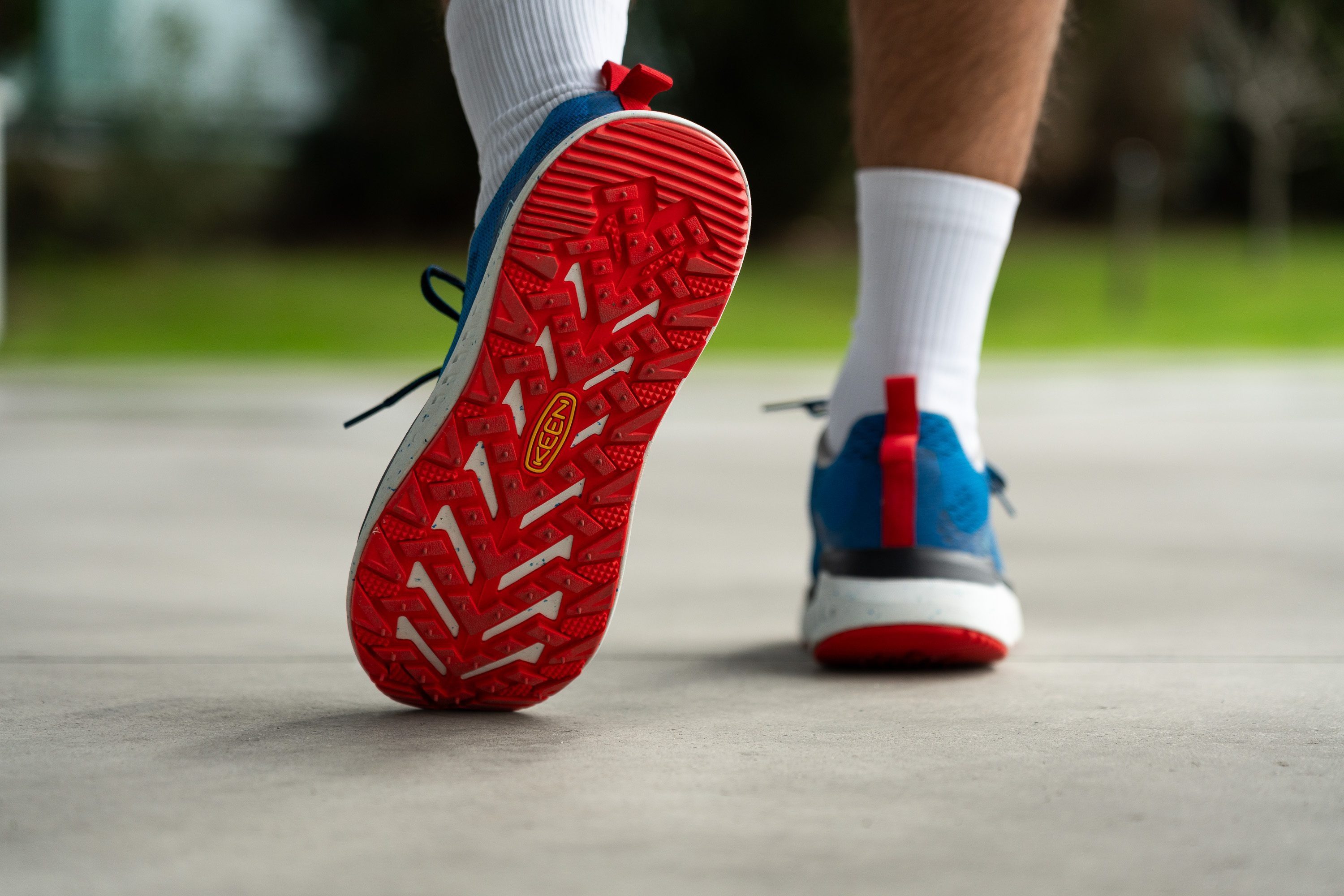
TIP: For concrete, choose shoes with a full-length rubber outsole, or at least make sure that rubber covers 2/3 of the shoe's bottom.
We also recommend that the rubber layer be at least 3 mm thick to ensure its longevity.

But not all walking shoes with hard rubbers pass our demanding Dremel test, where we apply sandpaper at a high speed of 10K RPM.
If the depth of the dent exceeds 1.2 mm, we don't tag the shoe as concrete-ready. This doesn't mean that the shoe can't be worn on concrete at all, but we can't recommend it for extensive wear on this type of surface because of limited rubber durability.

What are the grippiest walking shoes for concrete?
Dry concrete is rarely a slipping hazard, but it can become one in wet conditions.
That's why we measure the friction coefficient of all shoes on a wet slab of concrete, following the industry's acclaimed SATRA TM144 standard.
If you frequent wet concrete or any other potentially slippery surface, we recommend choosing shoes with a heel friction of at least 0.45.
How often should I replace my concrete walking shoes?
It's generally recommended to replace walking shoes every 500 miles as that's when cushioning starts to lose its original properties. However, signs of wear and reduced cushioning can be indicators for a replacement.
Can I use running shoes for walking on concrete?
As long as a running shoe meets the criteria mentioned in this guide, it can easily double as a walking shoe for concrete!
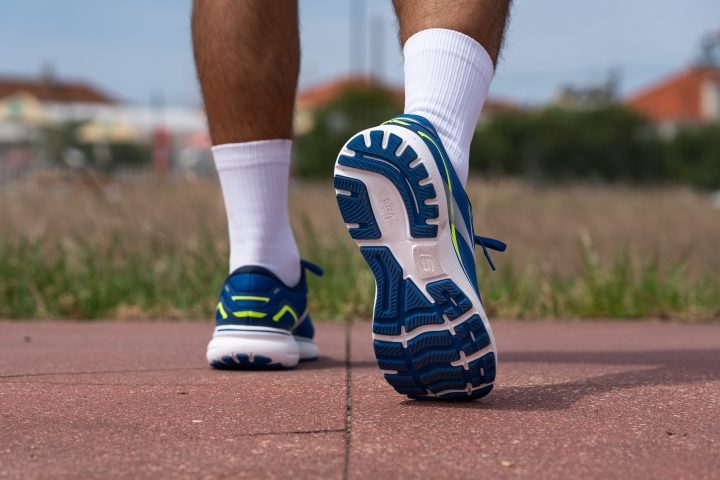
Because we perform the same midsole and outsole measurements across all categories, we can pick out the top 10 running shoes for walking on concrete too:

